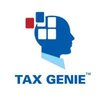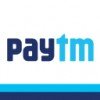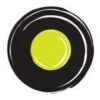
i
QueueBuster
Filter interviews by
QueueBuster Interview Questions and Answers
QueueBuster Interview Experiences
1 interview found
I applied via Referral and was interviewed in Oct 2022. There were 2 interview rounds.

(3 Questions)
- Q1. Introduce urself
- Ans.
I am a technical support engineer with 5 years of experience in troubleshooting and resolving technical issues.
I have a degree in Computer Science and have worked with various software and hardware systems.
I am skilled in analyzing and diagnosing problems, providing solutions, and ensuring customer satisfaction.
I have experience in working with both individual customers and enterprise-level clients.
I am a quick learner...
- Q2. About college project
- Q3. About problem solving skills, goals ,future ambition etc
Technical Support Engineer Interview Questions asked at other Companies
Top trending discussions






Interview questions from similar companies
Category Manager Interview Questions & Answers
Changejar Technologiesposted on 10 Dec 2024
I applied via Naukri.com and was interviewed in Nov 2024. There were 3 interview rounds.
(1 Question)
- Q1. How your last experience a fit for this company?
- Ans.
My experience as a Category Manager in the retail industry aligns well with the needs of this company.
Managed product categories to drive sales and profitability
Developed strategic plans for assortment and pricing
Worked closely with suppliers to negotiate contracts and promotions
(1 Question)
- Q1. How did you imporve P&L in last organisation?
- Ans.
Implemented cost-saving initiatives and optimized product assortment to increase profitability.
Analyzed sales data to identify underperforming products and discontinued them
Negotiated better pricing with suppliers to reduce costs
Implemented promotional strategies to drive sales and increase margins
Optimized inventory levels to reduce carrying costs
Introduced new product lines with higher profit margins
(1 Question)
- Q1. How to start a new category?
- Ans.
The steps to start a new category involve market research, identifying trends, setting goals, creating a strategy, selecting products, and launching the category.
Conduct market research to identify gaps and opportunities in the market.
Identify trends and consumer preferences to determine the potential success of the new category.
Set clear goals and objectives for the new category, including sales targets and market sha...

Product Manager Interview Questions & Answers
Airpay Payment Servicesposted on 15 Jan 2025
I applied via Naukri.com and was interviewed in Dec 2024. There were 2 interview rounds.
(2 Questions)
- Q1. Why shifting from government bank
- Q2. Tell about yourself
(1 Question)
- Q1. Case based on building a financial application for payments

The first round was a coding test, which was outsourced to an external vendor. I was asked 2 basic DSA questions, and there was discussions around the time and space complexity, and scope of optimizing the solutions. Post that there were a few questions around Spring Boot features and basic system design. The interviewer was professional throughout the interview, and the interview process felt more like a discussion, as compared to the standard interview process.
There was another round of coding - this time conducted by the organization itself. It consisted of a medium level DSA question on stacks. I wrote the code on my personal IDE and executed it there itself. The interviewer discussed about the possible edge cases and how I would deal with them. Post solving the question I was asked about my previous projects.
(3 Questions)
- Q1. Discuss in detail about a scenario where a challenging production issue was handled.
- Q2. What are your responsibilities as a senior / team lead in the current organization?
- Q3. How did you handle conflicts with junior engineers and reporting managers?
This was the final round where the discussion was largely around system design and HLD. It started off with questions are system design patterns and concepts. Then I was asked to design a booking design, with discussions around concurrency control and transaction management.
Interview Preparation Tips

MCQs around CS fundamentals
3 DSA questions on graph
(1 Question)
- Q1. Hackathon of two parts
(1 Question)
- Q1. DSA and system design

I applied via LinkedIn and was interviewed in Sep 2024. There were 4 interview rounds.
(1 Question)
- Q1. Things you have worked on in the past
- Ans.
I have worked on developing and launching new mobile applications for a tech startup.
Led cross-functional teams to define product requirements
Conducted market research and user testing to inform product decisions
Worked closely with designers and engineers to bring products to market
Managed product roadmap and prioritized features based on user feedback
Take home assignment on a relevant problem statement for the organization
(1 Question)
- Q1. Discussion on the assignment
(1 Question)
- Q1. Details of your salary and negotiation

(2 Questions)
- Q1. Asked me to give a self introduction
- Q2. Asked me about college activities
Interview Preparation Tips

I applied via LinkedIn and was interviewed in Jul 2024. There were 2 interview rounds.
(2 Questions)
- Q1. Sorting objects based on keys ruby
- Ans.
In Ruby, you can sort objects based on keys using the sort_by method.
Use the sort_by method with a block to specify the key to sort by.
For example, sorting an array of hashes by a specific key: array_of_hashes.sort_by { |hash| hash['key_to_sort_by'] }
You can also sort objects by multiple keys by chaining sort_by calls.
- Q2. Frequency of arr elements
- Ans.
Calculate the frequency of elements in an array
Iterate through the array and count occurrences of each element
Use a hash map to store element frequencies
Return the hash map with element frequencies
(2 Questions)
- Q1. Introduction about me, info about the previously worked projects
- Q2. Pick an random number from an array using random function and two pointer approach
- Ans.
Use random function and two pointer approach to pick a random number from an array of strings.
Initialize two pointers at the start and end of the array
Generate a random index between the two pointers
Return the element at the random index
Interview Preparation Tips
- Ruby Rails
- Rails
- DSA
Skills evaluated in this interview

Junior Engineer - Quality Assurance Interview Questions & Answers
TaxGenieposted on 22 Nov 2024
(2 Questions)
- Q1. What is SDLC and STLC?
- Ans.
SDLC stands for Software Development Life Cycle, which is a process used by software development teams to design, develop, and test high-quality software products. STLC stands for Software Testing Life Cycle, which is a subset of SDLC focused on testing activities.
SDLC involves planning, designing, coding, testing, and deployment stages.
STLC involves test planning, test design, test execution, and test closure stages.
S...
- Q2. Explain Bug life cycle
- Ans.
Bug life cycle is the process of a bug from identification to resolution in software testing.
Bug is identified by tester
Bug is logged in bug tracking tool
Bug is assigned to developer
Developer fixes the bug
Bug is retested by tester
If bug is fixed, it is closed. If not, it is reopened
Bug is verified in subsequent releases
Skills evaluated in this interview

(5 Questions)
- Q1. Sql, excel, python, g-sheet
- Q2. Window function
- Q3. Lookup, pivot, graphs, sumif, countif
- Q4. Puzzles, fake coin, 25 horses,
- Q5. Basic business understanding
Interview Preparation Tips
QueueBuster Interview FAQs
Tell us how to improve this page.
Interview Questions for Popular Designations
- Senior Executive Interview Questions
- Team Lead Interview Questions
- Design Engineer Interview Questions
- Intern Interview Questions
- Business Analyst Interview Questions
- Sales Executive Interview Questions
- Graduate Engineer Trainee (Get) Interview Questions
- Associate Software Engineer Interview Questions
- Show more
People are getting interviews through
Interview Questions from Similar Companies
QueueBuster Reviews and Ratings
based on 13 reviews
Rating in categories
|
Technical Support Engineer
11
salaries
| ₹3 L/yr - ₹4.5 L/yr |
|
Business Development Manager
10
salaries
| ₹4.8 L/yr - ₹6 L/yr |
|
UI/UX Designer
4
salaries
| ₹3.5 L/yr - ₹4.8 L/yr |
|
Inside Sales Executive
4
salaries
| ₹3 L/yr - ₹5 L/yr |
|
Senior Software Engineer
4
salaries
| ₹7 L/yr - ₹11 L/yr |

BookMyShow

Paytm

MakeMyTrip

Swiggy
Calculate your in-hand salary
- Home >
- Interviews >
- QueueBuster Interview Questions





